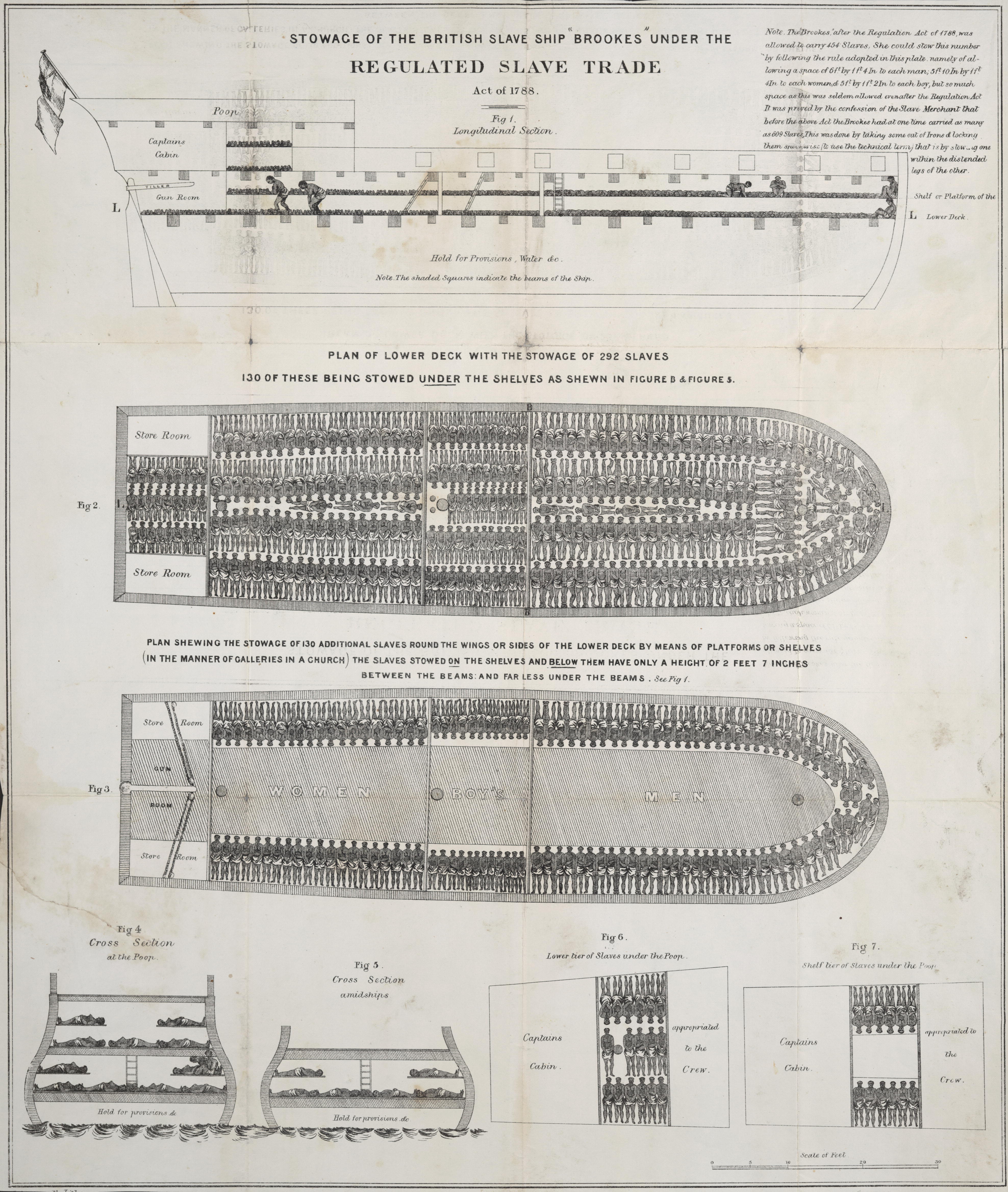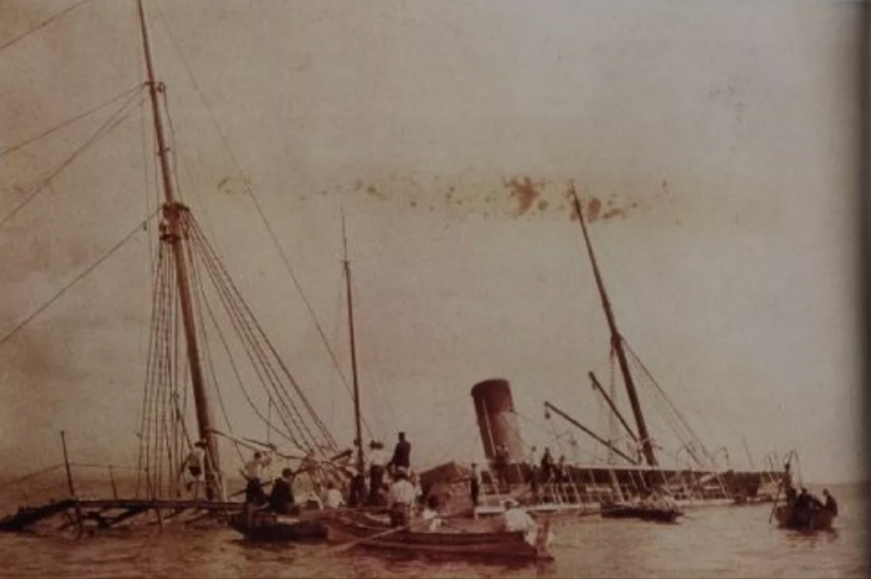|
Chance (ship)
Several vessels have been named ''Chance'': Mercantile vessels of the Age of Sail ''Chance'' (1786 ship) ''Chance'', a schooner of 39 tons ( bm), was launched in 1786 at St John's Newfoundland. She became a Liverpool-based slave ship in the triangular trade in enslaved people. Captain Jame Millbanke sailed from Liverpool on 31 March 1787. She was condemned on the coast of Africa as unfit for service. In 1787 nine British enslaving vessels were lost, four of them on the coast. ''Chance'' (1786 London ship) was a schooner launched in Virginia in 1779, probably under another name. From 1786 she traded between London and Africa, though she may have traded in enslaved people within African waters. A tornado on 28 March 1789 upset her. Her crew saved themselves, but abandoned her and the 33 captives onboard. By chance, another vessel later was able to rescue the 11 captives by then still alive. ''Chance'' (1799 ship) was built in India c.1799. She was captured and recaptured before bei ... [...More Info...] [...Related Items...] OR: [Wikipedia] [Google] [Baidu] |
Builder's Old Measurement
Builder's Old Measurement (BOM, bm, OM, and o.m.) is the method used in England from approximately 1650 to 1849 for calculating the cargo capacity of a ship. It is a volumetric measurement of cubic capacity. It estimated the tonnage of a ship based on length and maximum beam. It is expressed in "tons burden" ( en-em , burthen , enm , byrthen ), and abbreviated "tons bm". The formula is: : \text = \frac where: * ''Length'' is the length, in feet, from the stem to the sternpost; * '' Beam'' is the maximum beam, in feet. The Builder's Old Measurement formula remained in effect until the advent of steam propulsion. Steamships required a different method of estimating tonnage, because the ratio of length to beam was larger and a significant volume of internal space was used for boilers and machinery. In 1849, the Moorsom System was created in the United Kingdom. The Moorsom system calculates the cargo-carrying capacity in cubic feet, another method of volumetric measurem ... [...More Info...] [...Related Items...] OR: [Wikipedia] [Google] [Baidu] |
Liverpool Slave Trade
Liverpool, a port city in north-west England, was involved in the transatlantic slave trade. The trade developed in the eighteenth century, as Liverpool slave traders were able to supply fabric from Manchester to the Caribbean islands at very competitive prices. History On the 1 December 1699 the merchants John Earle and William Clayton, owners of the ''Liverpool Merchant'' sent this ship to Africa, where the captain William Webster bought a number of enslaved Africans, 220 were sold in Barbados. Liverpool was the pre-eminent slave trading port in Great Britain. From the mid 1740s Liverpool was the largest slave trading port in Britain, overtaking Bristol. Thereafter Liverpool's control of the industry continued to grow. In the period between 1793 and 1807, when the slave trade was abolished, Liverpool accounted for 84.7% of all slave voyages, with London accounting for 12% and Bristol 3.3%. After 1780, the Liverpool slave trade reached its height, there was no shortage of do ... [...More Info...] [...Related Items...] OR: [Wikipedia] [Google] [Baidu] |
Slave Ship
Slave ships were large cargo ships specially built or converted from the 17th to the 19th century for transporting slaves. Such ships were also known as "Guineamen" because the trade involved human trafficking to and from the Guinea coast in West Africa. Atlantic slave trade In the early 1600s, more than a century after the arrival of Europeans to the Americas, demand for unpaid labor to work plantations made slave-trading a profitable business. The Atlantic slave trade peaked in the last two decades of the 18th century, during and following the Kongo Civil War. To ensure profitability, the owners of the ships divided their hulls into holds with little headroom, so they could transport as many slaves as possible. Unhygienic conditions, dehydration, dysentery and scurvy led to a high mortality rate, on average 15% and up to a third of captives. Often the ships carried hundreds of slaves, who were chained tightly to plank beds. For example, the slave ship ''Henrietta ... [...More Info...] [...Related Items...] OR: [Wikipedia] [Google] [Baidu] |
Triangular Trade
Triangular trade or triangle trade is trade between three ports or regions. Triangular trade usually evolves when a region has export commodities that are not required in the region from which its major imports come. It has been used to offset trade imbalances between different regions. The Atlantic slave trade used a system of three-way trans-Atlantic exchanges – known historically as the triangular trade – which operated between Europe, Africa and the Americas from the 16th to 19th centuries. A classic example is the colonial molasses trade, which involved the circuitous trading of slaves, sugar (often in liquid form, as molasses), and rum between West Africa, the West Indies and the northern colonies of British North America in the 17th and 18th centuries. The slaves grew the sugar that was used to brew rum, which in turn was traded for more slaves. In this circuit, the sea lane west from Africa to the West Indies (and later, also to Brazil) was known as the Middle Pas ... [...More Info...] [...Related Items...] OR: [Wikipedia] [Google] [Baidu] |
Madagascar
Madagascar (; mg, Madagasikara, ), officially the Republic of Madagascar ( mg, Repoblikan'i Madagasikara, links=no, ; french: République de Madagascar), is an island country in the Indian Ocean, approximately off the coast of East Africa across the Mozambique Channel. At Madagascar is the world's List of island countries, second-largest island country, after Indonesia. The nation is home to around 30 million inhabitants and consists of the island of Geography of Madagascar, Madagascar (the List of islands by area, fourth-largest island in the world), along with numerous smaller peripheral islands. Following the prehistoric breakup of the supercontinent Gondwana, Madagascar split from the Indian subcontinent around 90 million years ago, allowing native plants and animals to evolve in relative isolation. Consequently, Madagascar is a biodiversity hotspot; over 90% of wildlife of Madagascar, its wildlife is endemic. Human settlement of Madagascar occurred during or befo ... [...More Info...] [...Related Items...] OR: [Wikipedia] [Google] [Baidu] |
Salem, Massachusetts
Salem ( ) is a historic coastal city in Essex County, Massachusetts, located on the North Shore of Greater Boston. Continuous settlement by Europeans began in 1626 with English colonists. Salem would become one of the most significant seaports trading commodities in early American history. It is a suburb of Boston. Today Salem is a residential and tourist area that is home to the House of Seven Gables, Salem State University, Pioneer Village, the Salem Maritime National Historic Site, Salem Willows Park, and the Peabody Essex Museum. It features historic residential neighborhoods in the Federal Street District and the Charter Street Historic District.Peabody Essex announces $650 million campaign WickedLocal.com, November 14, 2011 [...More Info...] [...Related Items...] OR: [Wikipedia] [Google] [Baidu] |
Invercargill
Invercargill ( , mi, Waihōpai is the southernmost and westernmost city in New Zealand, and one of the southernmost cities in the world. It is the commercial centre of the Southland region. The city lies in the heart of the wide expanse of the Southland Plains to the east of the Ōreti or New River some north of Bluff, which is the southernmost town in the South Island. It sits amid rich farmland that is bordered by large areas of conservation land and marine reserves, including Fiordland National Park covering the south-west corner of the South Island and the Catlins coastal region. Many streets in the city, especially in the centre and main shopping district, are named after rivers in Scotland. These include the main streets Dee and Tay, as well as those named after the Tweed, Forth, Tyne, Esk, Don, Ness, Yarrow, Spey, Eye and Ythan rivers, amongst others. The 2018 census showed the population was 54,204, up 2.7% on the 2006 census number and up 4.8% on the 201 ... [...More Info...] [...Related Items...] OR: [Wikipedia] [Google] [Baidu] |
Bluff, New Zealand
Bluff ( mi, Motupōhue), previously known as Campbelltown and often referred to as "The Bluff", is a town and seaport in the Southland region, on the southern coast of the South Island of New Zealand. It is the southernmost town in mainland New Zealand and, despite Slope Point and Stewart Island being further south, Bluff is colloquially used to refer to the southern extremity of the country (particularly in the phrase "from Cape Reinga to The Bluff"). According to the 2018 census, the resident population was 1,797, a decrease of 6 since 2013. The Bluff area was one of the earliest areas of New Zealand where a European presence became established. The first ship known to have entered the harbour was the ''Perseverance'' in 1813, in search of flax trading possibilities, with the first European settlers arriving in 1823 or 1824. This is the foundation for the claimAwarua Plain (top), Tiwai Point (centre) and Bluff (lower left) viewed from the International Space Station in ... [...More Info...] [...Related Items...] OR: [Wikipedia] [Google] [Baidu] |
List Of Shipwrecks In 1902
The list of shipwrecks in 1902 includes ships sunk, foundered, grounded, or otherwise lost during 1902. January 2 January 3 January 4 January 6 January 12 January 13 January 14 January 17 January 18 January 20 January 21 January 26 January 29 January 31 January Unknown date February 1 February 2 February 3 February 5 February 9 February 10 February 11 February 12 February 18 February 22 February 23 February 24 February 25 February 26 February 27 February 28 February Unknown date March 1 March 5 March 7 March 10 March 12 March 19 March 22 March 24 March 25 March 28 March 29 March 30 March 31 March April 1 April 3 April 9 April 11 April 13 April 15 April 20 April 21 April 22 April 23 April 24 April 25 April 26 April ... [...More Info...] [...Related Items...] OR: [Wikipedia] [Google] [Baidu] |




